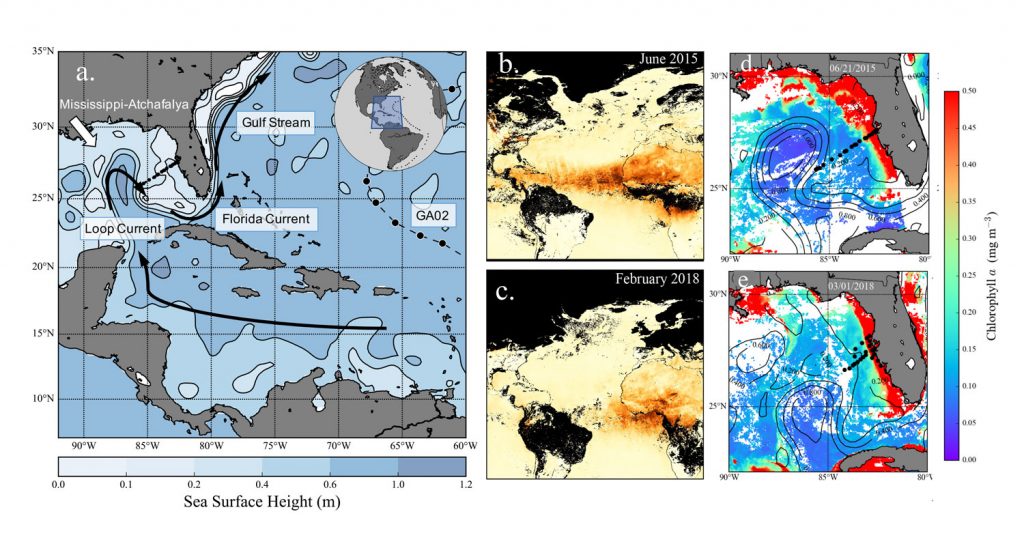Spatial and temporal variability of bioactive trace metals, speciation and organic metal-binding ligands in the eastern Gulf of Mexico
Mellett and Buck (2020, see reference below) present the concentrations of bioactive trace metals (Fe, Cu, Mn, Zn, Co, Ni, Cd, and Pb), Fe-and Cu-binding organic ligands, and electroactive Fe-binding humic substances in the eastern Gulf of Mexico from surface samples collected in June 2015 and in February 2018. Seasonal differences in dust aerosol load in the Atlantic were associated with increased concentrations of Fe, Mn and Pb in offshore. Total concentrations of Fe-binding ligands offshore were similar between seasons, and decreases in excess Fe-binding organic ligands in summer surface waters highlight the role of the ambient ligand pool in stabilizing dissolved Fe delivered via dust deposition to these waters. Apparent photoreduction of Cu-binding organic ligands in offshore summer surface waters led to Cu2+ concentrations that reached growth rate inhibitive concentrations for some cyanobacteria species. The concentrations of Fe-binding humic-like substances had a stronger associative relationship with Cu-binding ligands than Fe-binding ligands, suggesting that terrestrially derived photoactive ligands may have more influence on the cycling of Cu-binding ligands in this region. Intrusion of the Loop Current into the study region in summer appeared to entrain lower salinity water from the northern Gulf of Mexico and may serve as a mechanism to transport waters with elevated trace metals and Fe-binding organic ligands to the North Atlantic via the Loop Current-Florida Current-Gulf Stream system. Results from this study highlight seasonal-to-interannual variability in trace metal concentrations and bioavailability in the eastern Gulf of Mexico, and how Loop Current circulation patterns can connect trace metal biogeochemistry in these waters with the North Atlantic.

Reference:
Mellett, T., & Buck, K. N. (2020). Spatial and temporal variability of trace metals (Fe, Cu, Mn, Zn, Co, Ni, Cd, Pb), iron and copper speciation, and electroactive Fe-binding humic substances in surface waters of the eastern Gulf of Mexico. Marine Chemistry, 227, 103891. DOI: https://doi.org/10.1016/J.MARCHEM.2020.103891
